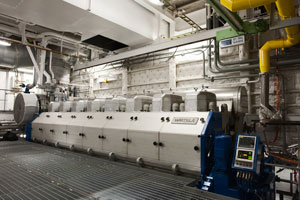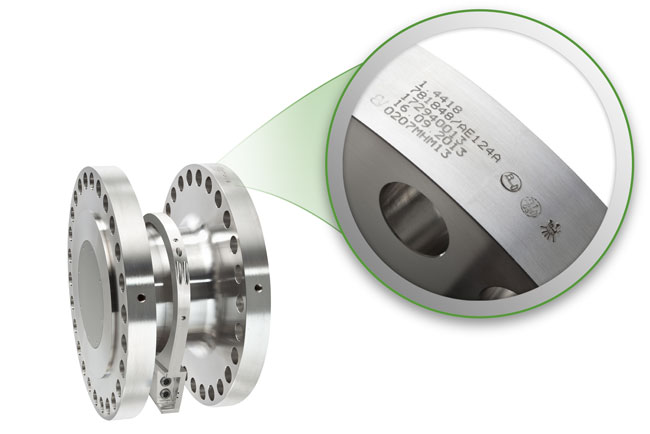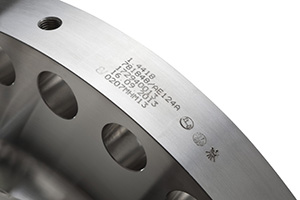The dual fuel engines developed by Wärtsilä run on either natural gas (LNG), marine diesel oil (MDO) or heavy fuel oil (HFO). The engine may be switched from operating in gas mode to oil mode and vice versa while it is running. When the engine runs in gas mode, a precise load signal is needed from the output shaft providing data on how much power the engine produces to be able to control the engine. To produce a precise load signal, the torque transducer needs to provide highly accurate measurement.
Image above courtesy of Wärtsilä
How a torque transducer enabled Wärtsilä to use natural gas as a fuel
Dual fuel engines operating on natural gas need highly accurate torque measurement – HBM's T40MAR enables Wärtsilä to use natural gas as a fuel.
Wärtsilä has developed dual fuel engines that are able to run on either natural gas, marine diesel oil or heavy fuel oil. In order to use the dual fuel engines in marine installations with direct driven propulsion, a precise load signal is required from the engine’s propeller shaft. HBM’s T40MAR torque transducer was accurate enough to offer the data Wärtsilä needed in shipbuilding.
The customer: Wärtsilä
Wärtsilä is the leading provider of ship machinery, propulsion, maneuvering solutions, and power plants for the marine and energy markets. They offer complete lifecycle solutions with machinery, systems, service, maintenance and training, and they’re committed to carrying out their business in a sustainable way.
Accuracy is crucial in measuring torque
HBM and Wärtsilä worked together to find a solution to the problem, and the most suitable option was HBM’s T40MAR torque transducer. Wärtsilä installed the T40MAR to their engine between the engine flexible coupling and the gearbox hub.
When the engine operates on gas, the fuel injection system needs the precise load signal for the engine to work correctly. The T40MAR measures the output shaft’s torque, which creates the load signal. Hence, the torque transducer needs to have a high accuracy level. While other methods were not accurate enough, T40MAR fulfilled the accuracy requirements with the accuracy class of only 0.15. This provides the best possible operating conditions for the engine to run and move the ship. Guy Beaho, Manager Business Development at HBM, explains:
''The main contribution to this remarkable accuracy class is made by the documented unbroken chain of comparisons tracing back the HBM torque transducers to the reference transducer of the German National Standard''
Growing demand for natural gas
Stricter emission legislation requires, ships to minimize sulphur emissions. Natural gas does not produce as much emissions, which makes it a cleaner fuel to use in ship engines. In addition, natural gas makes expensive exhaust gas cleaning systems redundant, so it is also a more cost-efficient choice. Wärtsilä’s dual fuel engines are compliant with IMO Tier III regulations when the engine uses gas, and they are compliant with IMO Tier II regulations when the engine uses liquid fuel oil. If you want to operate in compliance with IMO Tier III requirements today, you need to use natural gas or liquid fuels in combination with exhaust gas cleaning. When operating on natural gas exhaust gas cleaning is not required. As the market for natural gas powered ship engines is growing, it is very important to answer this new demand.
''However, using the dual fuel engines with direct driven propulsion would not be possible without the T40MAR, so we are very pleased with the solution we found together with HBM''
Development Engineer at Wärtsilä Marine Solutions, Viktor Häggblom


